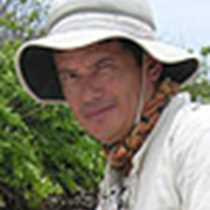Española Island
Española, or Hood Island, is considered the oldest in the archipelago. In contrast to San Cristobal — the island we visited yesterday — Española doesn’t have highlands, all of them have disappeared after millions of years of erosion, and their remains can be seen converted into dust along the island.
Our day began with an optional early morning wake-up for kayaking. The first outing began with excellent weather conditions and our guests had the opportunity to discover hidden places along the coastline and see sea lions, sea turtles and many different species of fish.
After breakfast we boarded our Zodiacs and headed to shore to snorkel along Gardner Islet. The water temperature and the visibility were excellent allowing us the opportunity to discover strange creatures stuck on the vertical walls. We saw colorful sea urchins, sea stars, sea anemones, sponges and many other invertebrates that captivated the attention of our guests. After snorkeling, we headed to the beach, probably one of the most spectacular in the islands. The sand is flour white and there are sea lions lounging that at a distance look black as big rocks, and in the background the green vegetation or the turquoise waters. Along the bushes another ecosystem showed us another face of Española, with many species of land animals such as cactus finches, mockingbirds, doves and the fearful Galápagos hawk.
After midday we lifted the anchor and headed to Punta Suarez at the western of Española. It was not as sunny as it was in the morning, thus making easier for us to walk along boulders and rocks to climb up to the albatross area. We observed many of them displaying their romantic courtship and others incubating their eggs. Sharing the territory with the big albatrosses were other species that enchanted us with their appearance such as Nazca boobies, blue-footed boobies, lava lizards and the swallow-tailed gull, unique because of its nocturnal habits. The vegetation was exuberant, turning the island completely green. Probably the rain makes life easier for some animals but more complicated to others. That is the rule in this amazing archipelago called “Galápagos.”




